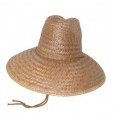Sore knees, aching muscles, callused hands, sunburned neck. Sound familiar? As we get older, a fun day of playing in the dirt can lead to pain and discomfort the following day. But when enjoying a day in the yard, we sometimes ignore that little voice in our head that is telling us to take a break. We know that we should apply sunscreen or put on a hat. Our body sends us signals that we are lifting wrong or that we are getting dehydrated. But, just as when we were younger, we keep on going. Why? Because we are having fun even though the activity is hard and draining. For those of us that are not exactly spring chickens, read on and heed these tips. This is common sense stuff here. Avoiding injury and discomfort is something all of us want to do. Following these tips will help make today’s garden project more enjoyable and possibly help you to be pain free tomorrow.
(ARA) – Warm weather is here and it’s time to get the garden going. Gardening is good for you on many levels – from the mental health boost you get from doing something relaxing to the physical benefits of exercise, time outdoors and adding fresh vegetables to your diet. Bending over to weed, gripping gardening tools and the general physical effort of gardening, however, can make existing aches and pains worse, or even cause new ones.
This summer, take steps to ensure your gardening experience is as comfortable and beneficial as possible. Here are some ideas for avoiding injury and irritating existing conditions while gardening:
Warm up
You wouldn’t go jogging or work out without doing some light stretching and warm-up exercises, and you shouldn’t jump into gardening without warming up first. Before stepping into your garden, do some stretches to limber up, especially your arms, legs and back. When you’ve completed your gardening chores for the day, finish up with more stretching.
Banish bending
Many Americans suffer from chronic back pain, and while it’s important to keep moving despite discomfort, it makes sense to minimize activities that could create or worsen pain. Bending over to work in the garden can be hard on your back. If back pain is a concern, consider planting your garden in raised beds this year, or working with container gardens. Elevated beds require you to bend less when doing typical gardening chores. And container gardens can be placed on tables or deck railings to make it easy to reach plants.
Protect hands and wrists
Weeding, hoeing, raking, shoveling – the repetitive motions of gardening can lead to hand and wrist pain, and worsen existing conditions such as arthritis. Taking steps to minimize irritation and discomfort while you work can help ensure your gardening tasks don’t create aches or worsen pain. Consider wearing an Arthritis Glove, like the Imak-made glove commended by the Arthritis Foundation, to provide mild compression and warmth while you work. Because the gloves are made of cotton Lycra with an open fingertip design, they won’t make your hands hot or hinder movement. Designed by an orthopedic surgeon, the Arthritis Gloves are also fully washable, so you don’t have to worry about getting a little dirt on them as you go about your gardening tasks. An added bonus – wearing any kind of glove can help you avoid another common gardening injury: blisters.

Guard skin
Sunburn and insect bites are also a risk for gardeners, who spend a lot of time outdoors. While most insect bites are just an irritation, sunburn can cause serious, long-term skin damage. To ward off mosquitoes and other biting bugs, apply an insect repellent. Prevent sunburn by always wearing sunscreen – the kind that blocks both UVA and UVB rays – whenever you’re outdoors. Use a wide-brimmed, lightweight hat to shade your eyes and keep the sun off your head. Take frequent breaks and drink plenty of water, especially on hot days when you’ll be out for several hours.
Move wisely
Lifting can be another source of back pain, and gardening often involves lifting, whether it’s heavy bags of soil or seed, or a full basket of the fruits of your labor. Remember to lift from a squatting position, with your back straight, so that your legs do the work, not your back. When kneeling down, use gardening knee p
ads or even just a rolled up towel to cushion your joints from the hard, damp ground. Remember to minimize twisting motions that can inure your back and joints.
With a few precautions, you can ensure this summer’s gardening activities remain safe, enjoyable and pain free.
There you have it. Reminders to care for yourself during this summers garden projects.
As always,
Happy Gardening,
Dave and Trish

P.S. Our most important tip:
Keep hydrated! Drink water, water, water and more water. Being fully hydrated will fend off dizziness and fatigue. And it’s the best way to prevent over-heating your body.
